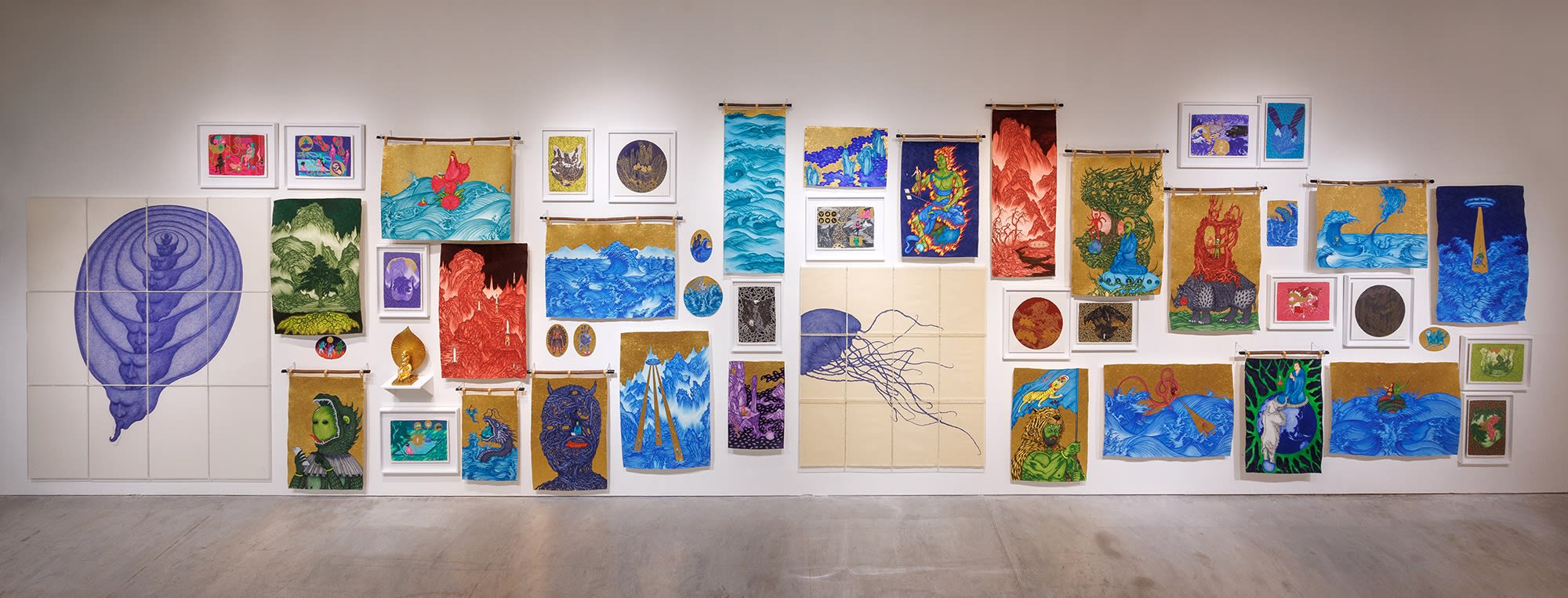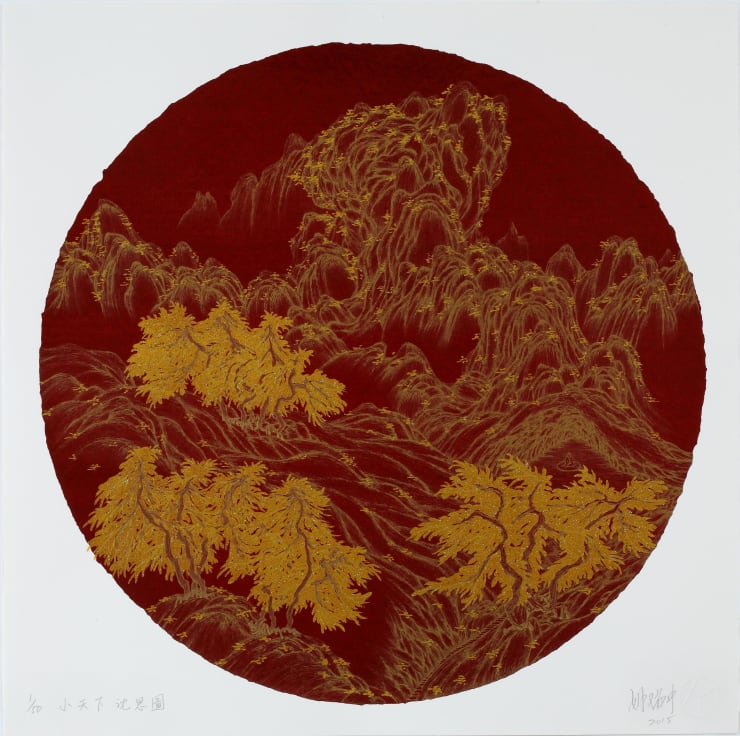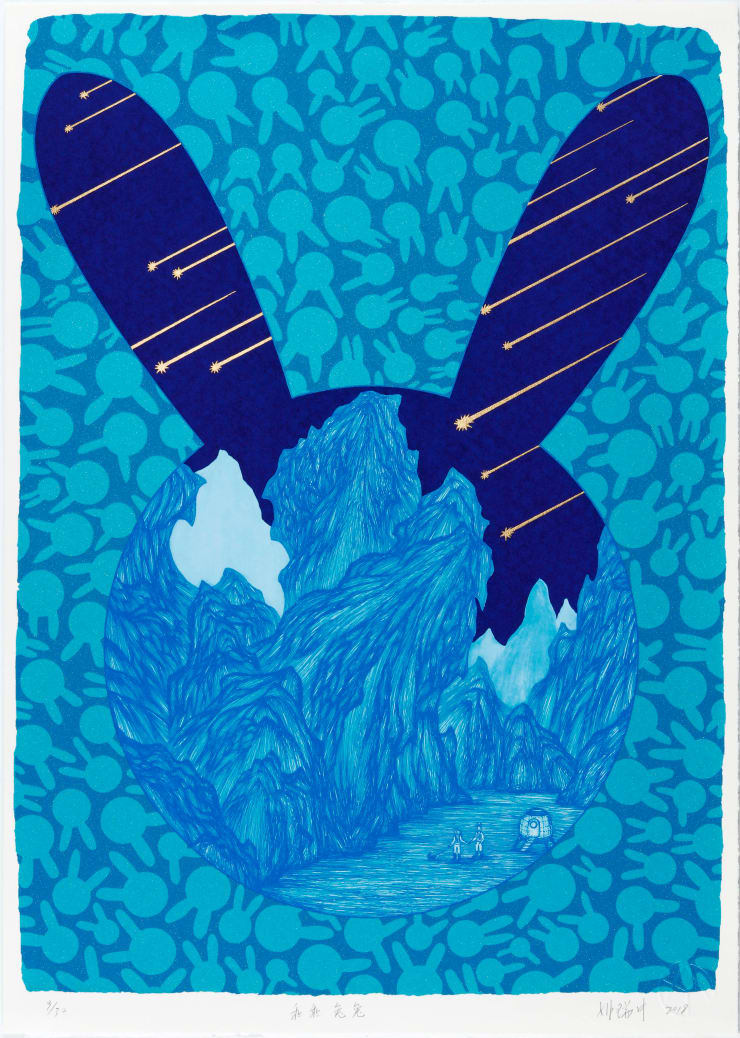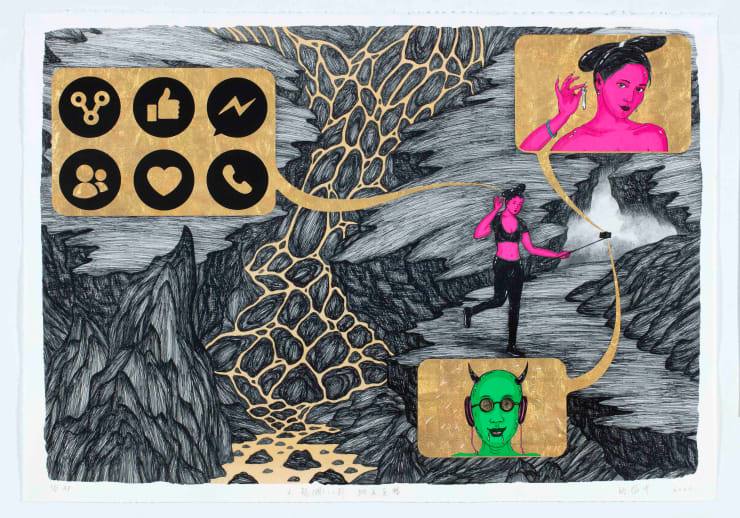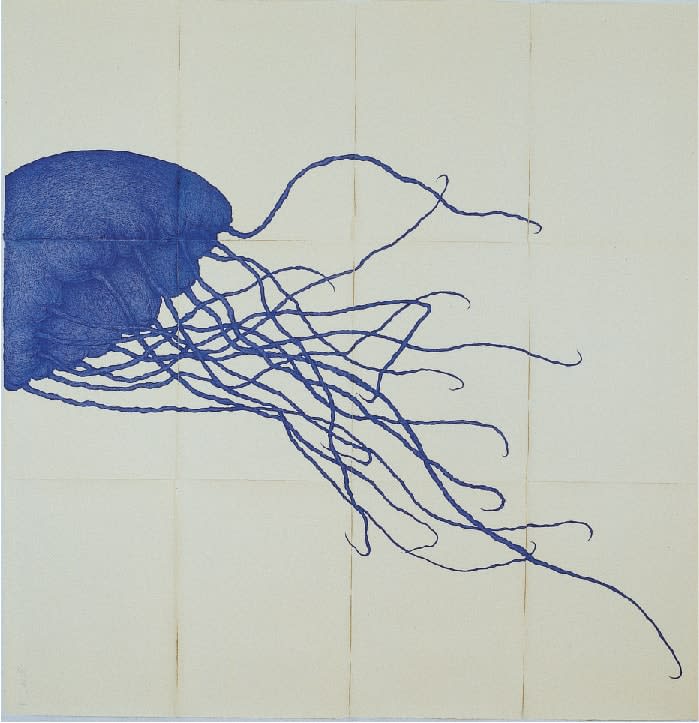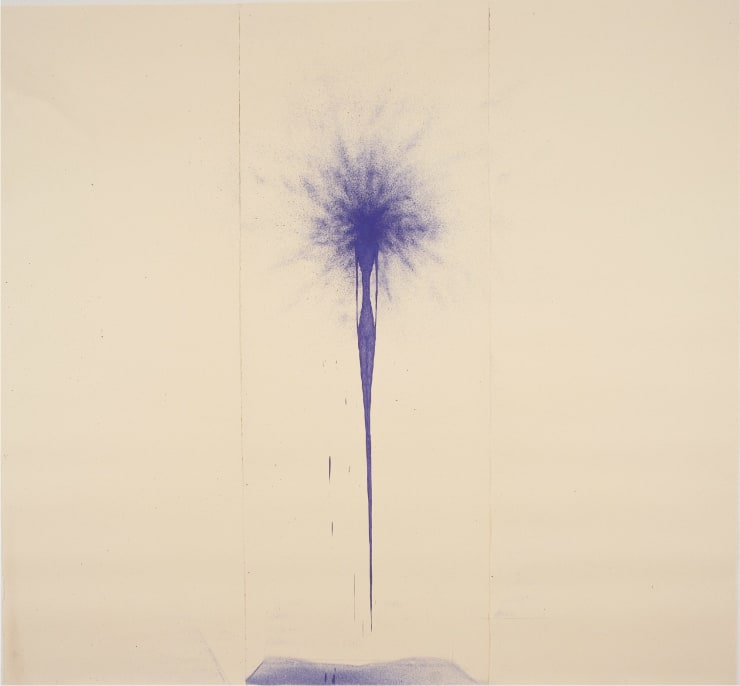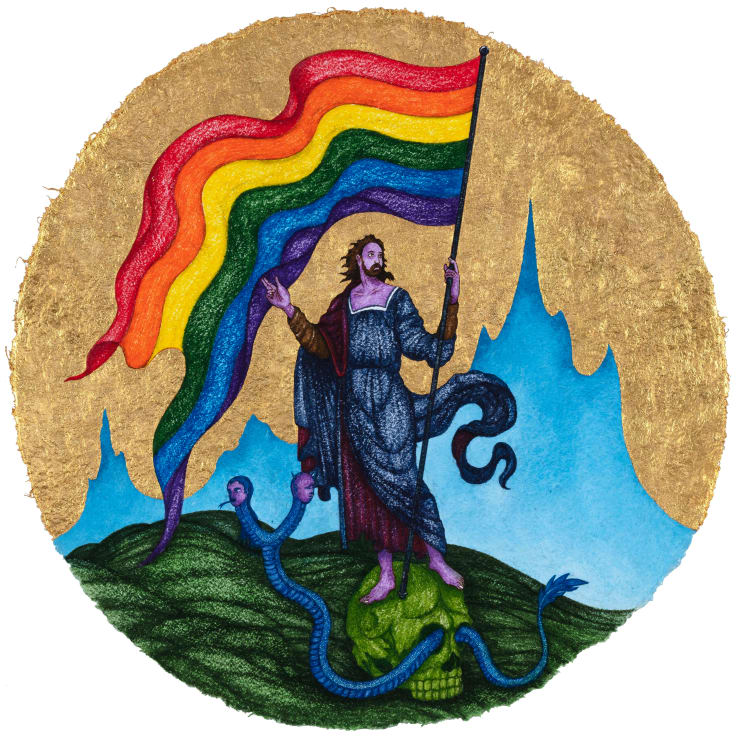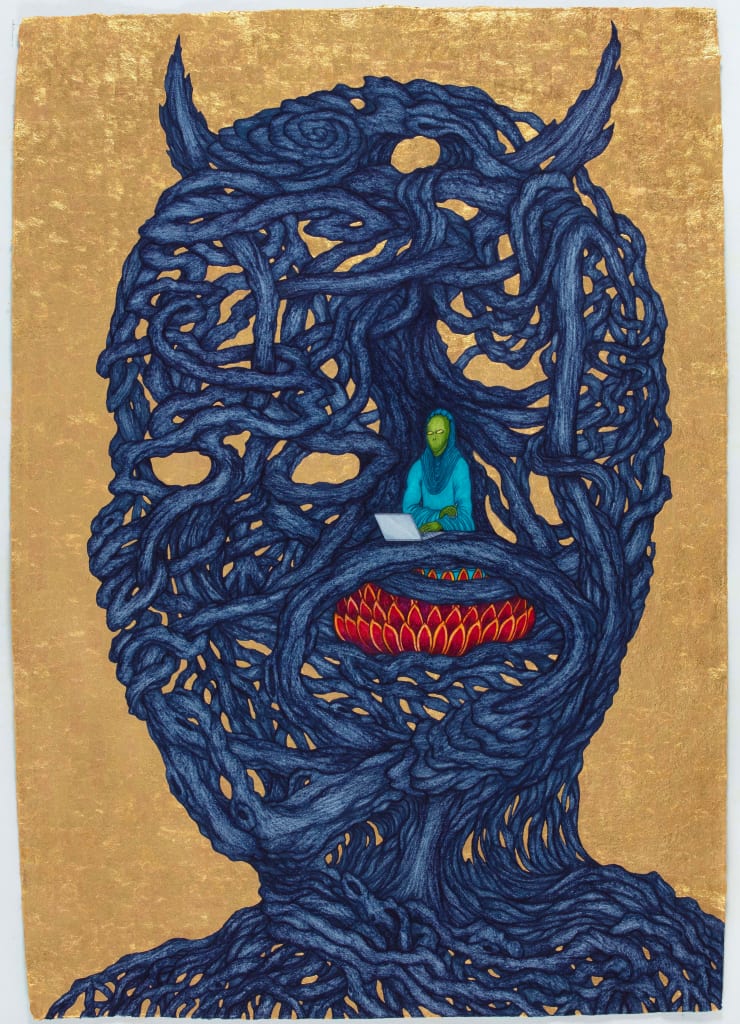Invidia: Yao Jui-Chung Solo Exhibition
-
Overview

Yao Jui-Chung: Invidia
Exhibition Dates│08.05.2023–09.23.2023
Reception|08.05.2023 (Sat.) 4:30 p.m.
Venue │ Tina Keng Gallery (1F, No. 15, Ln. 548, Ruiguang Rd., Neihu Dist., Taipei, Taiwan 114)
Curator|Zian Chen
Essay|Zian Chen
Tina Keng Gallery is pleased to present Yao Jui-Chung: Invidia, featuring a comprehensive collection of nearly 90 works, with the majority created following the artist’s Munich residency at the Apartment of Art (AoA) during the summer of 2022. Yao’s residency wove a mesmerizing tapestry of experiences: navigating through intense heat waves, encountering ethereal beings within the grandeur of castles and villas, and immersing himself in the ever-present medieval Catholic imagery that permeated Munich. The city’s coat of arms, resembling its German name “Home of Monks,” adds a symbolic touch to this immersive ambiance. The resulted “Mimike” series (2022–23) draws rich references to various historical iconographies from mythic geography and classical paintings. Acting as a painterly travelogue to document his residency, the series ingeniously merges elements of fiction into everyday life, creating a captivating blend of artistic expression and storytelling.
-

A parallel to his previous solo exhibitions, Vimalā-bhūmi (2019) and Hell Plus (2022), where the artist meditates on the ontological question of death and decaying, the current exhibition takes its title from the Latin expression of envy, one of the seven sins in Catholicism. This expression captivates the artist as a focal point during his visits to historical sites adorned with a plethora of Catholic iconographies, marking a continuation of his ongoing exploration into spiritual beliefs and human desires. What sets this show apart is the return of Yao’s characteristic humor, which extends the tone from the previously perceived monotonous mourning in Vimalā-bhūmi and Hell Plus to a vibrant liveliness, thus forging a dynamic space of negotiation with the contemplative nature of the themes explored.
Also on view in this exhibition is the artist’s first foray into crypto art and blockchain-based art. These include: performance video Moon–Block–Chain (2023), which delineates the link between traditional divination practices and computerized cryptography; The Twelve Disciples (2023), a depiction of12 distinct digital icons ranging from human figure to animal, spirit, god, and mythical creature, referenced from the artist’s past body of work. The exhibition also presents a selection of previously unseen print series, including “Fairyland” (2015), “Pet” (2018), and “Hedonist” (2022–23) series. Some of these works evoke personal memories of his cherished pet; others conjure fantasy stories inspired by his travels.
-
Works
-
Also on view in this exhibition is the artist’s first foray into crypto art and blockchain-based art. These include: performance video Moon–Block–Chain (2023), which delineates the link between traditional divination practices and computerized cryptography; The Twelve Disciples (2023), a depiction of12 distinct digital icons ranging from human figure to animal, spirit, god, and mythical creature, referenced from the artist’s past body of work. The exhibition also presents a selection of previously unseen print series, including “Fairyland” (2015), “Pet” (2018), and “Hedonist” (2022–23) series. Some of these works evoke personal memories of his cherished pet; others conjure fantasy stories inspired by his travels.
To underscore the productive dynamics between travel and studio practice, wherein Yao’s approach as wanderlust is manifested across artistic mediums and literary expressions, the exhibition also showcases the artist’s early large-scale works on paper, including “Beyond the Blue Sky” series (1997), and There is Nothing But Loneliness (1997), both completed during his residency at the Headlands Center for the Arts in Sausalito, California, and “Beyond the Human Being” series (2001) made during his residency at Gasworks in London. In these pivotal residency experiences, the artist employs simple mediums — sheets of paper assembled together — to recreate the scale of the murals he used to paint at abandoned industrial ruins back in Taipei. The repeated brushstrokes of ink pen skillfully capture the sense of seclusion during his residency. Although seemingly uncomplicated, these works hold a profound significance as they represent key moments that mark paradigm shifts, enriching his formal and artistic styles.
In this exhibition, Yao’s artistic language has largely developed from his stay at Villa Waldberta, occasionally evoking echoes of 19th-century Gothic novels that arise from ecological imbalances and the seclusion of castles. Yao Jui-Chung further responds to a long-standing tradition of documenting travel experiences in Chinese classical landscape painting, perhaps best exemplified by the classical style paintings of Chinese émigré poet Chiang Yee (1903–1977) with their rich portrayal of European castles and embodiment of multicultural clash.
During his residency at the Headlands Center for the Arts, Yao utilized individual sheets of paper to cover the entire wall, creating a visually immersive experience. This display approach is now adopted in the current exhibition, offering viewers an encompassing view of the distinct stages of the artist’s career while preserving a subjective glimpse into the decisive moment of each individual stroke and subtle undertones.
-
-
-
Artist
This website uses cookies
This site uses cookies to help make it more useful to you. Please contact us to find out more about our Cookie Policy.

